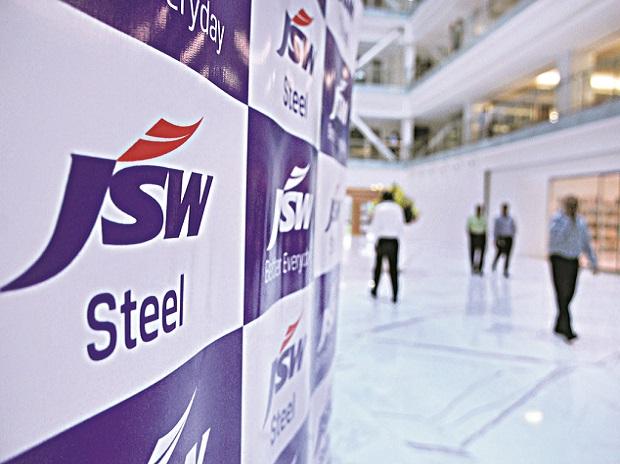JSW Steel's 2 Indian Subsidiaries Expected To Return To Profit In Q3 FY23

The Indian subsidiaries of JSW Steel, Bhushan Power & Steel (BPSL) and JSW Steel Coated Products, are expected to be back making profits in Q3 FY23.
In Q2 FY23, the two companies posted losses. While BPSL moved from profit to loss Q1 to Q2, JSW Coated narrowed its losses over the same period.
Multiple factors were responsible for BPSL’s swing, said Seshagiri Rao, joint managing director and group chief financial officer, JSW Steel. Those issues are behind and the company’s performance will normalise in the current quarter, he said.
Among the major constraints that BPSL faced was availability of iron ore. India’s iron ore production, in the first five months of the year, came down by 10 million tonne (mt), said Rao. At the same time, exports of iron ore and pellet together fell from 18 mt to 7 mt but that didn’t improve availability.
Rao said crude steel production was 61 mt compared to 57.5 mt in the previous year, signalling an incremental demand of 10 mt of iron ore.
Logistics and monsoon rains shaped BPSL’s performance. The result was that even as the company completed its expansion from 2.75 mt to 3.5 mt, it could not increase volumes.
In addition, due to a high level of moisture in the coal from ports or iron ore from the mines, fuel consumption "disturbed the whole operation and costs went haywire,” said Rao.
BPSL recorded an operating EBITDA loss of Rs 183 crore in Q2FY23 as against a positive EBITDA of Rs 698 crore in Q1FY23. In Q2FY22, it had stood at a positive Rs 2,022 crore.
JSW Coated managed to bring down its losses in Q2 versus Q1. In Q2, it recorded an EBITDA loss of Rs 79 crore as against a negative EBITDA of Rs 154 crore in Q1FY23. In Q2FY22, it recorded a positive EBITDA of Rs 1,032 crore.
JSW Coated is a downstream unit and the hot rolled coils (HRC), a raw material, was bought at a higher cost. But prices have come down since and the subsidiary will now derive benefit.
HRC prices have fallen sharply by around 28 per cent since April when it hit peak levels in the domestic market. Globally, prices corrected by 35-40 per cent.
While Rao expects the Indian subsidiaries to make profits in Q3FY23, global macroeconomic challenges may make the turnaround of JSW’s Ohio unit uncertain in the current quarter. “In the US, the situation is not looking that great, particularly the demand for HRC,” he said.
HRC prices had gone up to over $2,000 a tonne and have come down to $850 a tonne. Ohio produces slabs and HR Coils. “Prices of pig iron and scrap that they bought to produce slabs, crashed. Hence, they had to take net realizable value (NRV) provisions on stocks of raw material. Demand for HRC also fell,” Rao said.
In Q2FY23, JSW Steel USA Ohio Inc posted an operating EBITDA loss of $40.25 million. The US Plate and Pipe Mill, however, reported a positive operating EBITDA of $24.73 million as plate prices had not fallen that much.
JSW Steel posted a consolidated net loss of Rs 848 crore in Q2 FY23.
BoE Loosens Capital Rules
The Bank of England has taken a significant step towards easing post-crisis regulation by lowering its estimate of the c... Read more
Monzo Looks For US Banking License
Monzo is preparing a renewed push to secure a US banking licence, four years after abandoning its first attempt when tal... Read more
Crypto Firms Push Into US Banking
America’s cryptocurrency companies are scrambling to secure a foothold in the country’s traditional banking system, ... Read more
Parallel Banking: Stablecoins Are Now Global
Parallel Banking: How Stablecoins Are Building a New Global Payments SystemStablecoins—digital currencies pegged to tr... Read more
JPMorgan Deploys AI Chatbot To Revolutionize Research And Productivity
JPMorgan has deployed an AI-based research analyst chatbot to enhance productivity among its workforce, with approximate... Read more
Private Equity And Banks: The Complex Web Of Leverage
Private equity has emerged as a significant force in the global financial landscape, driving substantial growth and inve... Read more

